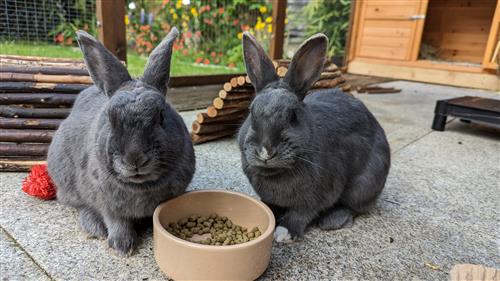The importance of neutering rabbits
Everyone knows the saying ‘breed like rabbits…’ and neutering is certainly important for controlling population numbers with our rescue centres full to bursting. However, there are many other benefits to neutering pet rabbits apart from stopping rabbit numbers getting out of hand.

Both male and female rabbits will reach sexual maturity (be able to breed) at slightly different times. This is dependent on nutrition, age, body weight and breed of rabbit. Small rabbit breeds attain puberty between 4 – 5 months of age; giant breeds between 6 – 9 months.
Once they reach puberty, hormone increases will cause the onset of adult behaviours such as territoriality. At this time rabbits will begin to mark territory, which they do with both urine and faeces – so previously litter-trained rabbits will begin to deposit both urine and faeces around the environment.
Defensive or territorial behaviour can also be directed at companions as well as owners with aggression and fighting occurring at this age in some rabbits. Fighting amongst male rabbits can be particularly bad, as biting and scratching can be directed at the testicles leading to severe injury.
Female rabbits, if left unspayed, are also particularly prone to the development of cancers of the uterus. These are extremely common and capable of spreading (metastasizing) to many different areas of the body. If the rabbit is spayed before the tumour has spread, the surgery is curative but once the tumour has spread elsewhere, cure is not possible. Testicular torsions and tumours are uncommon in rabbits and can be avoided with castration.
Neutering (spaying in females and castrating in males) if undertaken between 4 – 6 months prevents or reduces unwanted aggression and improves litter training. It prevents the development of uterine tumours in females and can be curative in the early stages if the tumour has not spread. It also prevents false pregnancies and other problems such as infections of the uterus that can develop.
Veterinary Case study – the importance of neutering rabbits to avoid serious health problems
A 6 year 10 month old female entire rabbit was presented for left hindlimb lameness of several weeks’ duration. There was no known trauma and the patient continued to eat normally but with reduced faecal output. On physical examination, the rabbit showed an increased respiratory rate (220 breaths per minute) with slightly increased effort. Her heart rate was normal 240 beats per minute. She was slightly lean body condition 2 / 5 and ten-tenths lame on her left hind limb. There was mild muscle atrophy of the muscles of the left pelvic limb and a palpable soft tissue swelling of the ilio – sacral area. There was a small abdominal mass palpable in the caudal abdomen and her mammary glands were prominent.
She was given meloxicam 0.6mg/kg orally, ranitidine 5mg/kg orally and booked for imaging.
For sedation, we gave methadone 0.7mg/kg and midazolam 0.7mg/kg and medetomidine 0.01mg/kg intramuscularly.
Radiographs (Figures 1 and 2) showed a calcified soft tissue mass in the caudal abdomen confirmed on ultrasound to be the uterus. The left side of the pelvis exhibited severe lysis of the bone of the ilium extending to the level of the acetabulum. Thoracic radiographs reveal the likely metastatic spread of uterine adenocarcinoma.
This case demonstrates the importance of neutering rabbits to avoid serious health problems such as uterine tumours and also facilitate better training and behaviour in rabbits.
By Dr Nadene Stapleton, Royal Veterinary College, Beaumont Sainsbury Animal Hospital, London, and winner of the ‘Rabbit Vet of the Year’ category in the Burgess Excel Vet Awards 2021

